#sustainable urban design
Explore tagged Tumblr posts
Text
sustainable urban design

alright. this was my last post on this topic. doesn't it look like a blank canvas shaped like an alien head with antennae?
22 notes
·
View notes
Text
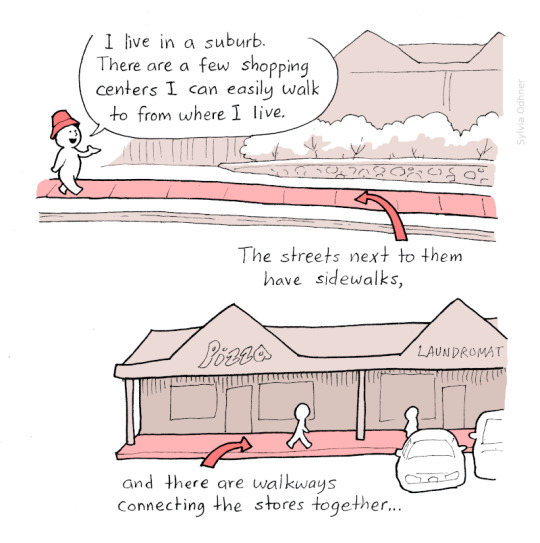
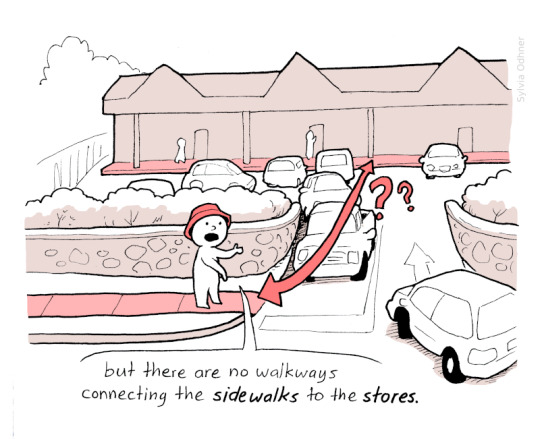
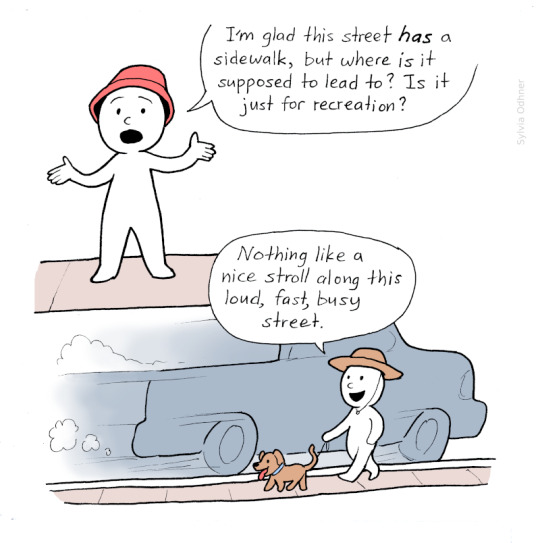
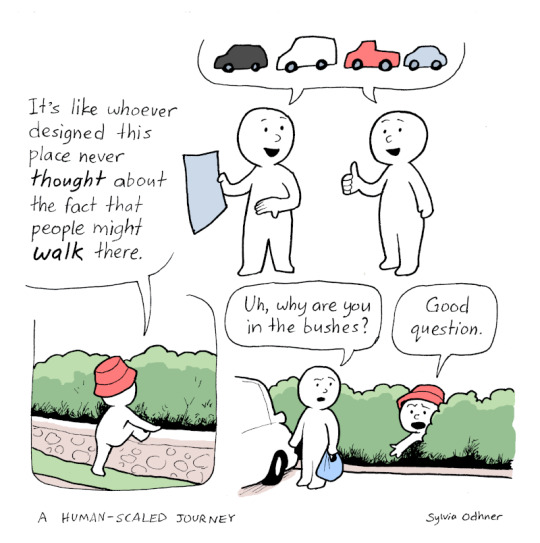
The Shopping Center Disconnect
41K notes
·
View notes
Text
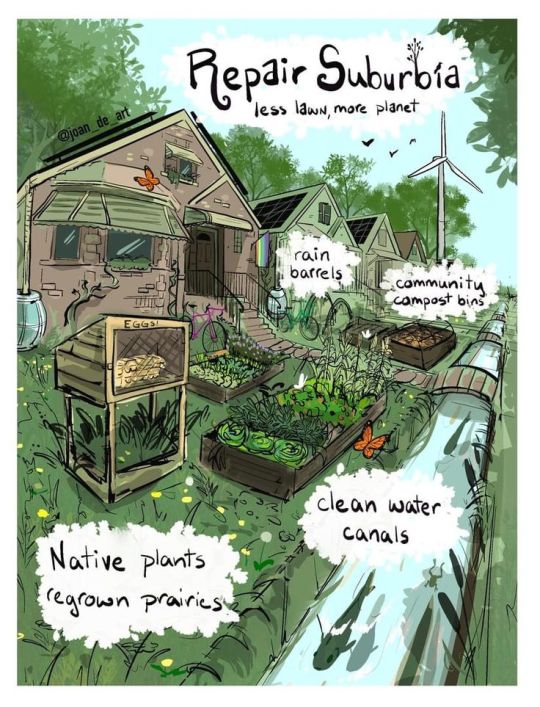
Little vision for a more beautiful, sustainable, tactile future.
2K notes
·
View notes
Text

The Maldives Floating City, set to open in 2027, will provide eco-friendly, floating residences for 20,000 people, adapting to rising sea levels.
#Maldives#floating city#climate change#sea level rise#eco-friendly architecture#sustainable living#urban planning#2027#innovative design
74 notes
·
View notes
Video
youtube
How to turn your Neighborhood into a Village
Permaculture instructor Andrew Millison journeys to Portland, Oregon to talk with architect Mark Lakeman, founder of Communitecture Architecture and the City Repair Project. Mark initiated a movement in Portland to transform the homogenous neighborhoods of the city into places that have many of the qualities and characteristics that are found in some of the most treasured villages on Earth. Mark reveals the things you need to know to transform your own neighborhood into a village.
Previously on Solarpunks: Ideas & Inspiration For Better Cities: Sprawl Repair Retrosuburbia
#solarpunk#neighbourhood#sprawl#repair#regenerative#urbanism#portland#andrew millison#permaculture#retrosuburbia#suburbia#US#design#Sustainable Design#community
1K notes
·
View notes
Text
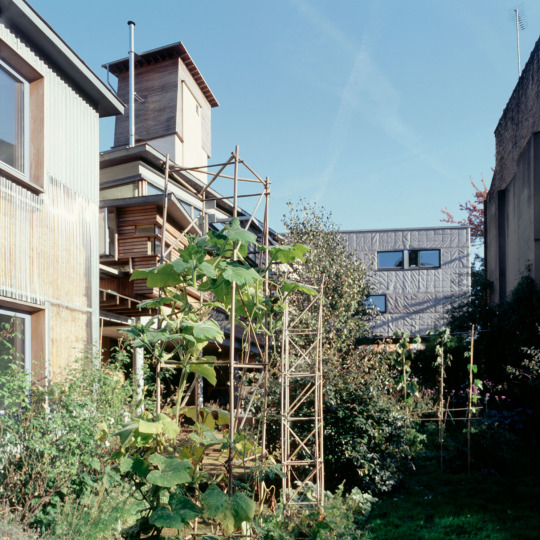

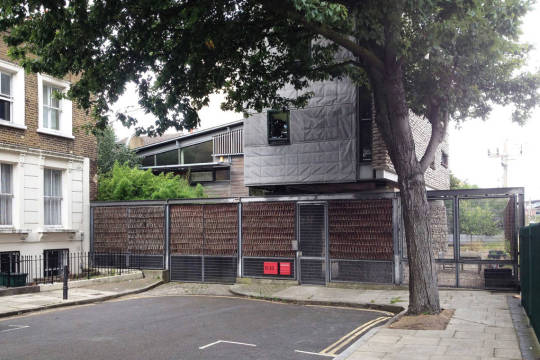




Stock Orchard Street, London - Sarah Wigglesworth Architects
#Sarah Wigglesworth Architects#architecture#design#building#modern architecture#interiors#house design#experimental#low cost#renewable energy#sustainable architecture#quirky#recycled materials#steel#office#studio#london#design studio#urban#cool design
95 notes
·
View notes
Text
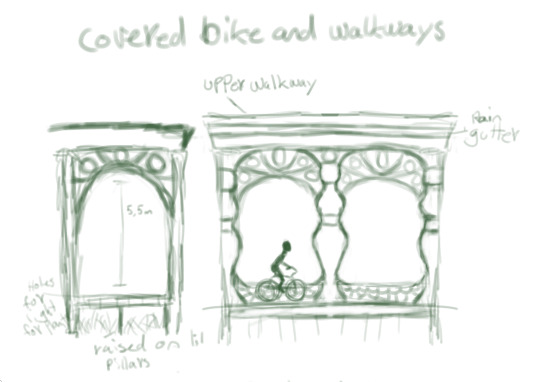

Rough sketches for an idea of dual purpose covered bike and walkway, inspired by victorian and art nouveau architecture and decoration style. What do you think? :)
#solarpunk#hopecore#hopepunk#peaceful revolution#greenhorizon#anti capitalism#anti fascism#sketch#ideas#solarpunk ideas#lunarpunk#tidalpunk#climate change solutions#urban design#city planning#infrastructure#sustainability#environmentalism
82 notes
·
View notes
Text
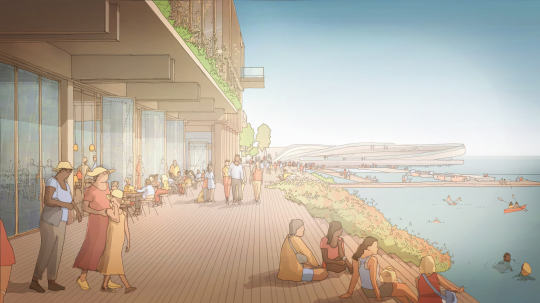
Revitalizing the ocean economy with transformative sustainability innovation in urban planning and architectural design
Image: © Haptic Architects, Oslo Works, and BOGL
A waterside scheme spanning 45,000 sqm with features including Fjordarium—an aquarium with underwater galleries capturing the fjord’s marine life and anticipating its future. The facility is part of a wider knowledge hub of workspaces for marine industry and ocean tech businesses. Haptic Architects and Oslo Works reimagine a disused parking lot as a global centre for sustainable oceanic practices.
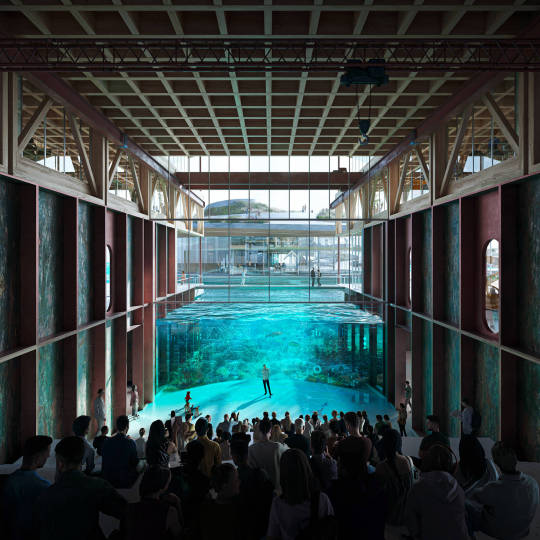
Fjordarium featuring underwater galleries that peek into the marine life of the fjord
The Fjord area is designed as the educational centre of the scheme and will house the Fjordarium. This building will provide an immersive visitor experience by offering a window directly into the fjord. The Fjordarium will encompass various facilities such as a restaurant, bar, gallery, event space, research laboratories, workspaces, and teaching rooms above and below the water level.
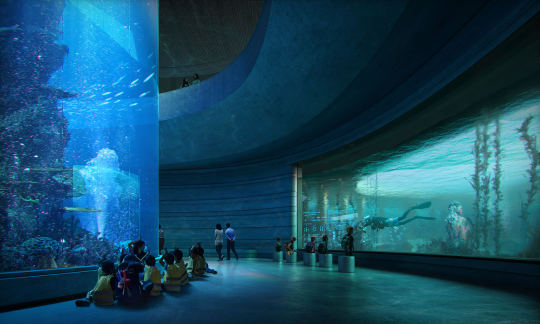
In collaboration with the Norwegian Institute for Water Research (NIVA), the design of the Fjordarium building has been created to safeguard marine biodiversity. The building, as per the design statement, will be engineered to withstand the fjord's waves and currents while maximising natural light penetration into the underwater areas. It will address the challenges and provide solutions for cleaning the heavily polluted fjord caused by agricultural waste. In partnership with We Are Human, the architects have conceived the Fjordarium as a destination that will seamlessly blend physical and virtual experiences. It will serve as a global learning platform, exploring the drivers of the new blue economy while promoting a shift towards environmental sustainability and a regenerative approach to oceans.
16 notes
·
View notes
Photo
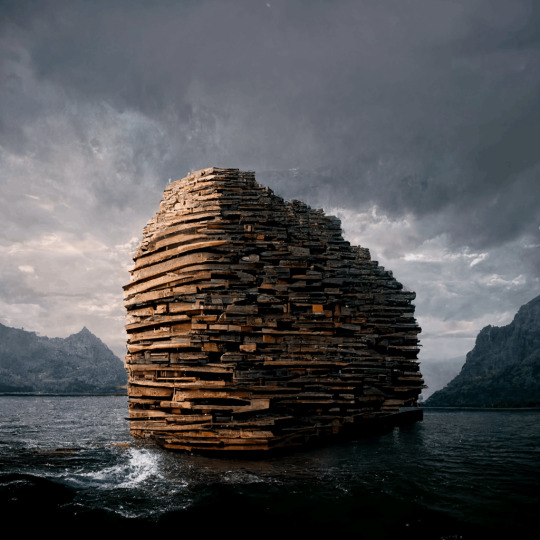
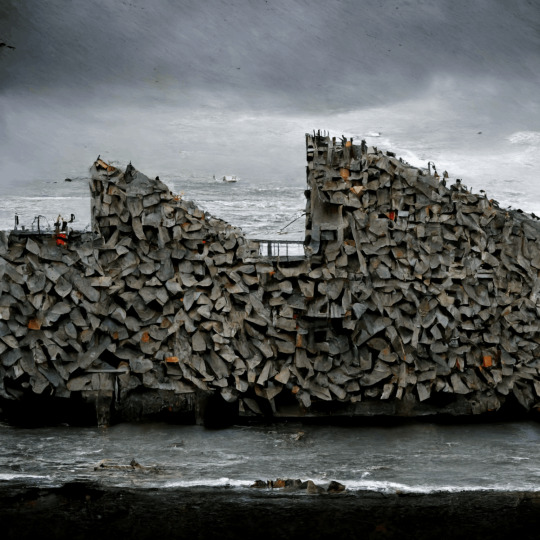


“Upcycled Collectives”
The project proposes an alternative architecture where construction debris up-cycling and mirco-climate systems work together to achieve architectural resilience in extreme weather conditions.
This approach argues for a "more is more" ethos; the accumulation of discrete leftover or refused material for its own sake. Reducing waste in landfills, local job sites and advocating for a radical change in our current waste and material supply chains while empowering local communities.
Erick Vernon-Galindo / Arch Hive
#art#design#Architecture#upcycle#concept#conceptual#sustainability#sustainable architecture#erick vernon-galindo#wood#debris#resilience#climate change#urbanism#arch hive
153 notes
·
View notes
Note
Hello! Do you have something for inspiration? Like, for world with urban magic but kinda cute? Like Ghibli but modern?
Hello Anon!
Here is a series of videos that fit your description, even if it's not 100%. Still, hope they will help you)
youtube
youtube
youtube
youtube
youtube
I also recommend checking daymoon channel
Also BLUE TURTLE, although it's more suited for high fantasy
youtube
#useful#inspiration#worldbuilding#art#science#nature#solarpunk#environmentalism#ecopunk#reuse#slow fashion#permaculture#sustainable fashion#solar punk#character design#art by others#animation by others#music#ambience#atmospheric#chill#fantasy#urban fantasy#character art#original character#original art#2d animation#2d animated video
8 notes
·
View notes
Text

#boston#landscape architecture#meadow#sustainability#boston public library#monum#urban planning#urban design
5 notes
·
View notes
Text
urban designer muses, 2023
See, in my head there was a golden era of human connection in almost every culture, thrust upon us by the proximity to each other (and our occupation/work) by the very need for safety. safety in numbers, in shared causes of survival of the tribe, a sense of belonging and purpose. It wasn’t so ideal, I know, people died, anyone who didn’t fit in never got to find people who were more like them. I don’t really want that.
And maybe I’m blessed in modern culture that we have travel and we have technology and we have ways I could find people who think like me, that I’m not stuck with my visionary ideas ricocheting through my head for connection and better greater belonging and purpose that no one asks about meaning the pressure builds up so high that I lose my grip on reality among those ideas I have no way of anything close to implementing all on my own. Maybe I’m blessed I can blog them online and travel to or attend virtually conferences of people who are putting together similar plans. Read books by them. There are 8 billion of us here after all.
But if you know me you also know I’m terribly skeptical and cynical of all things colonialism, all things industrial revolution, all things Rational Economic Man, all things stoicism that seem to come exclusively from those who like to lord power over others and strip the humanity of all of us until we’re polished shells of people, starting with themselves. None of that connection beyond the superficial, and if that doesn’t meet your needs there’s something wrong with you. I think it’s what leaves us longing, rightly, for something more, spiritual, supernatural, divine. You can see why when this very culture is reflected in faith spaces it’s so much worse than outside: this place that claims to be for people like me who claim to believe in what I do, expects me to be just the same as the culture and the air we breathe. Doesn’t know how to handle me when I’m not. Doesn’t know how to handle any of the people who’ve come through our doors who aren’t actually, I’ve watched so many of them leave, a little piece of me dying every time. And those of us here—we just want connection don’t we? Connection with God and each other. We want that empathetic witness to what we go through in life because we know it isn’t that happy facade at all times. Good. But my theory is this culture has been around so long that we’re all so empty and drained because of it; none of us have the resources to be the first ones to set a culture of vulnerability, when we can’t without having someone to carry our hurts, and there’s no one there who can be that—the natural cycles are out of whack, a lot like the carbon and nutrient cycles of our planet. None of us have the capacity in us to sit there patient and try again and again to slowly help our loved ones feel more comfortable to open up even as we see them stuck in their own heads and shame and the fact that for so much of our weeks, our time, our nervous systems don’t feel that kind of safety and the moments that they do, the hurt just spills out and can’t be communicated maturely in a way that builds strong and vulnerable community. There’s a greater need for support than anyone can give.
I think in a culture that values individual success and achievement and having space from others when they annoy you instead of working around your needs and threshold and creating healthy boundaries so you can coexist, we don’t think that the average person needs it. We are none of us trained to give that, properly, we’ve not had people be that for us, well, except for God. And when we have that, we don’t see it, because no one has modelled it to us and we don’t think we need it. We don’t realise our community relies on it, little bit by little bit, giving and taking it in a way that creates balance, creates equality in the banks of social capital and tanks of capacity to give, as we invite more people in rather than turn them away.
Of course to get there we need a lot of emotional maturity and ability to give, through things like therapy and I might also say education. But most of all we need the time and space to dedicate to this in a sustainable manner. I’ve done so in an unsustainable manner before, not realising what I was coming to to fill me up and then pouring out from, had me pouring more and being filled up less until all that was left for me to do was step back and analyse that need. One I saw all around me and everything we did drained us more and the math didn’t add up. We were feeding each other the gospel without ever applying it to address this pressing need that was obvious to me but apparently not everyone else, something that might have us functioning better, reaching out better in love and community and bringing people in, showing the gospel with our lives: we are liberated to connect. We are equipped to show radical love.
I am now when I pace myself, but something about this community drains me more than it equips me and if it’s a choice between being able to give something sometimes or participate and vaguely give to the community but go away feeling drained and unable to give anywhere else—including the job that I support myself with—I know which one I’m going to choose. For so long I didn’t.
And somehow I think I’m not the only one. I’m unique in that I’m southeast asian and naturally tend towards more community-centred interaction and collectivist responsibility. I’m unique in that I grew up in western sydney and had that loyal hard work and resourceful problem-solving attitude that doesn’t see community and relationships as transient but rather something to work on building from a very young age. I don’t understand how people cut and run. I don’t understand how they think about what they can get unless their bodies force them to. Part of that is related to my faith too. Maybe it contributes to my curiosity and constant stream of ideas on how we show the gospel to more people and throw off whatever in our culture is unhelpful. Ideas I feel desperate to at least talk about because of all the need around me. That I felt the structures of ministry actually holding me back from meeting. The community I thought I was in exhausting me, no one there to listen when I wanted to fix it, work on it, but I knew I couldn’t do it alone. People who, bless them, felt nothing was wrong and it is such a privilege to feel that from the status quo, not have to invest all your emotional energy into living with the feeling of injustice everywhere.
I guess we’ve lived in this normalised superficial connection, living in what most of history would consider mansions one for each nuclear family, nucleated, requiring a car and a concrete plan in order to have a deep conversation with someone, actually connect, with anyone who isn’t your parents, children, siblings, or spouse if you’re married. The ecosystem is simply too small to meet our needs and I think we just forgot we have them? No wonder youth love camps so much. It’s a different community setup, something that meets the needs we have that the setup of our settlements have taken away from us. Would it be that we could congregate at the church after work and it only be a minute’s walk home after. Would it be that connecting with this community didn’t take up our entire Sunday, so that we could have some time to do our chores and connect with our family, as well as get our in the community and connect there too. Outreach. But the design of our city functions to keep us as far away from each other as possible.
Let me unpack that. Basically, we’re designed around cars, which keep us from interacting in transit with those close in proximity to us except in road rage. Our jobs are transient and we don’t live near them, resulting in long and lonely commutes that extend our work days by hours. We’re left with little interaction in our schedules except with those we live with and share facilities with, or those we work with, or do hobbies with if we have time and money for them. Which you have to drive to, like church. Our schedules are organised around work, sleep, whatever we put in them—little incidental interaction and a lot of striving towards what we do for work, doing better at our hobbies, being a better, kinder person to those we live with. And when we do interact outside it’s a show, for the Pinterest house or the Instagram story about our gatherings—not always, but when you’re invited in first, you have to get through these and spend the required money and do the required tidying in hope that someone lets you in deeper as you keep extending the invitation.
As young adults, we have work and study and hobbies and we long for the connection of camps whether we live with our parents—or we live out of home and struggle to pull together rent so that we can work a bit closer to that. But the locations we can find housing in impact this, impact our access to our loved ones who we are properly close with, we end up shuffled around for work, we can’t live close to the church or other base for community in order that it might have the least barriers (many of us are disabled, neurodivergent, many of us are struggling in different ways and society often doesn’t help us meet our needs) and barriers are just too many. We learn to live without that biblical connection we long for.
We learn to study and get jobs and maybe afford therapy, but we only live one day at a time. Maybe we get cynical, maybe we struggle more and more socially, maybe we never end up being able to reach out to the new person and maybe we lose the ability to reach out beyond our faith. I’ve seen it. I’ve seen it go on and spiral further and I’ve seen many give up on creating a community in which we can heal and let down our guards and actually grow. I’ve seen the way we as a church, people of all ages, hide behind our serving roles—I know this doesn’t work for me. I know I long for more, to do more, to prayerfully sustain myself in community as I do—and I need community who can support me in that, I can’t do it alone.
So I don’t know what to do except create a vision of a better way to settle and dwell as humans who care for the world—a way that facilitates our caring, a way that optimises our emotional energy and creates the most social capital, academically this is the thing that keeps community organisations and churches going and functioning, even if they also require money donated and we also believe in a supernatural provision—this provision comes in the form of financial yes but mostly social capital. I’ve exhausted myself because I know when I’m fed in community I do have that. But when my needs aren’t met I have to look after myself. I’ve spent so much of my life trying to turn around this freight train of our culture and now I’m doing the smart thing: getting qualified to lay the tracks.
This is why I can’t at the moment serve in any other way. But I can analyse demographic patterns of poverty and how that flows on in areas of little access to resources and I can analyse the impact of growing up middle class and suddenly being an adult, perhaps a burnt out gifted kid, who suddenly has to work for the most basic things. I can analyse how these areas, the areas many of us might move to and be surprised, have higher rates of domestic violence mental illness and greater need for the gospel and its implicit empathetic witness to our pain and captivity, but less resources to pour this out. I can analyse how people who don’t interact with those experiencing these things and learn their stories tend to blame them or not believe their needs. I can weave these strings together as I come up with ideas, it’s what I do best.
But as I zoom into a group of young people who don’t know how to have the leadership and emotional maturity to create a spiritually mature group—a demographic in social poverty who have grown up, the first generation outside a few selective schools academically, pressured to perform and view any kind of productivity and performance over connection—not to invest in social capital, not to invest in each other when our pressures on our time of study and work are too much. Both men and women now, it used to only be men. I don’t know what anyone else has been ordained to do, but for me I can rebel against the world by using my productivity to build relationships. Build community. And maybe that’s the thing we all need to be convicted of. Rooted in the convictions we have, but actually making a difference in the choices that we make: a practical theology, not just a belief
#lil bit of everything#community#punk christianity#urban design#sustainable urban design#urban planning#faith community#faithfromanewperspective#silver bridges#personal mental health tag
0 notes
Text
The Rich History of Emancipation Day and Independence Day in Jamaica
Jamaica’s history is a vibrant tapestry of resilience, struggle, and triumph. Central to this story are two pivotal celebrations: Emancipation Day and Independence Day. These holidays commemorate Jamaica’s journey from colonial rule and slavery to freedom and self-governance. Understanding these days offers a glimpse into the spirit of the Jamaican people and their enduring quest for liberty and…
#Affordable housing#community development#eco-friendly designs#Emancipation Day#Federation of the West Indies#free villages#Independence Day#Jamaica#Marcus Garvey#Michael Manley#National Heritage#national identity#public housing projects#republic establishment#rural migration#slavery abolition#social reforms#Sustainable housing#Universal Adult Suffrage#urbanization
4 notes
·
View notes
Text
Great Idea 22: Sustainable urbanism
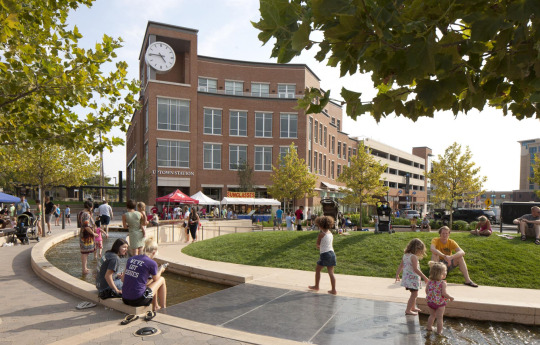
The trend toward complete communities shapes the debate on sustainability and environmentalism, and vice-versa. Read more.
#great ideas#new urbanism#urban design#urbanism#cities#walkability#communities#environment#sustainability#sustainable design#sustainable development
9 notes
·
View notes
Text

The Maldives Floating City, set to open in 2027, will provide eco-friendly, floating residences for 20,000 people, adapting to rising sea levels.
#Maldives#floating city#climate change#sea level rise#eco-friendly architecture#sustainable living#urban planning#2027#innovative design
57 notes
·
View notes
Text
What to expect from us:
Happy timezone, fellow Wayfarers!
We previously introduced our values, but we also wanted to introduce what you can expect from us in both our original and reposted content.
We explore various themes relevant to our contemporary society and the society we wish to build. Here is some of what to expect:
A highlight on current events.
Discussions of urban design and transportation systems.
Diverse community building and maintenance for online and in person.
Conversations about sustainability.
On topic book, podcast, and video reviews and suggestions.
And so much other content that aligns with our values.
Please engage, share your thoughts, and follow to be a part of the conversation!
-Wayfarer ❤️
#urban design#community building#Sustainable Living#Current#Events#innovations#Media Recommendations#Empowerment#Social impact#solarpunk#hopepunk#Environmentalism#social good#climate solutions#anticapitalism#anticonsumerism#decolonization#wayfarer society
9 notes
·
View notes